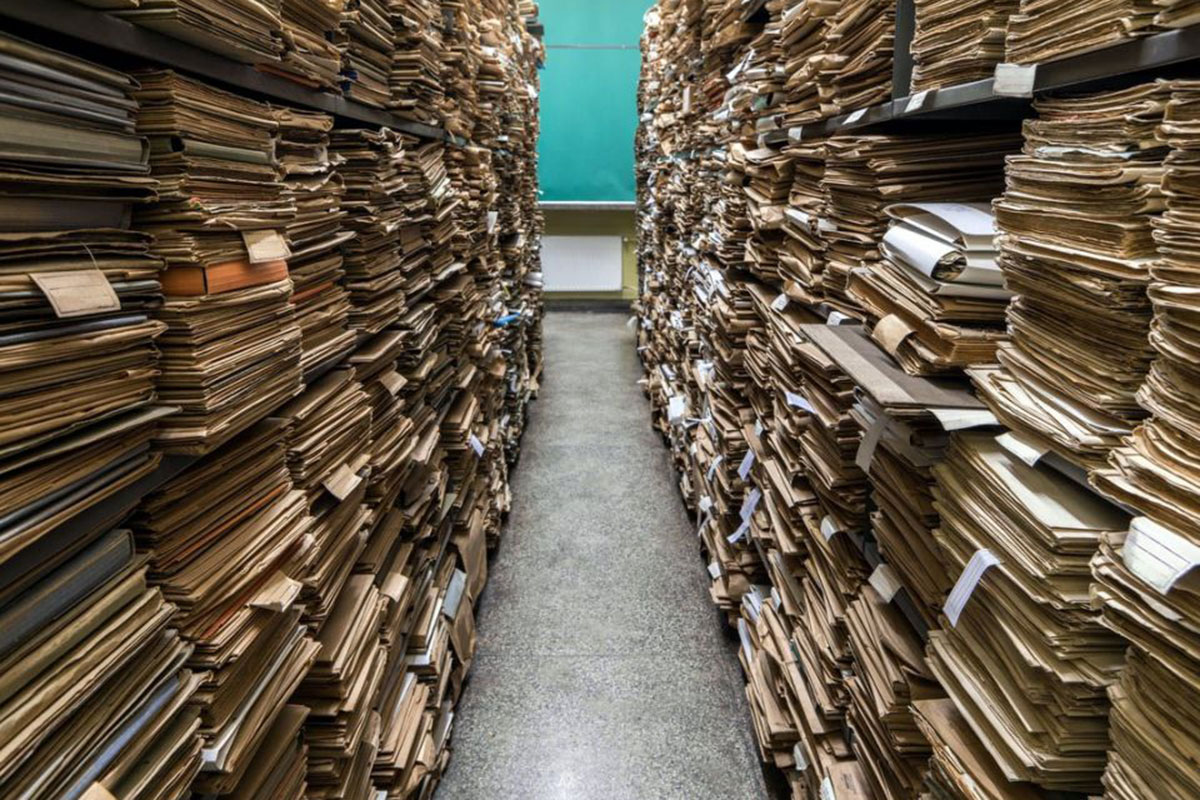
Digitizing archives can make information more accessible, especially during the coronavirus pandemic. // Image from Shutterstock
For the record: Digitizing archives can increase access to information but compromise privacy
Stay-at-home orders mean no eating at restaurants, attending shows or visiting friends and family. It also means that Canadian archives institutions and facilities, following public health orders, have restricted access for genealogists, academic researchers and anyone else digging through the past.
Why don’t archives just digitize everything and make it available online?
Collections at a large archive like Library and Archives Canada (LAC) include hundreds of kilometres of records, millions of photographic images, maps, architectural plans and artworks, and hundreds of thousands of hours of audio and video recordings. LAC, like other archives, has more mandate than budget. Digitizing this quantity of material far exceeds the institution’s resources.
Then there are the benefits relative to costs. Archives like LAC cite the popularity of records as the number one reason for digitization. Legal and academic research requires not just selected records, but entire bodies of records, including many not looked at since they were put into the archives. Digitizing large runs of obscure records would not be a responsible use of scarce public funds.
Protecting privacy and intellectual property
Like many archives in Canada, LAC holds government records as well as records donated by private individuals and organizations. Access to these private records may be restricted under legally binding donor agreements to protect donor privacy, third-party privacy or copyright.
But even with government records, the situation is not so simple. Government records include personal information of individuals, which must be protected under the Privacy Act.
Equally, the Access to Information Act, while opening many government records, keeps some closed to protect third-party privacy and national security, and for other reasons.
Since government records include records received by government, such as when a citizen sends a letter or a consultant submits a report, governments do not hold the copyright on all their records. As a result, some cannot be digitized under the Copyright Act.
Read more: 2020 is a year for the history books, but not without digital archives
Canadian history is replete with examples of government surveillance that in retrospect is seen to be unwarranted and harmful. Indigenous communities, for example, have been under government surveillance for longer than Canada has been a nation. The records of this surveillance are government records. Digitizing them and placing them online would deprive Indigenous people of their privacy and undermine Indigenous sovereignty.
Preserving the digital
Archives do not destroy the records they digitize. For every digitized record the burden of preservation is doubled: the original must be maintained and the digital copy, to be useful, must be preserved against obsolescence and data loss.
Unless archives are provided special funding, digitization is a zero-sum game: it uses up resources that are not available for other tasks. Among the most important of these is the preservation of born-digital records, including email, spreadsheets and documents, as well as new forms of records such as websites and social media.
Created on outdated computers and stored on obsolete media like floppy disks or CDs, born-digital records require specialized software, equipment and methods of preservation. Canadian archives desperately need public and researcher support for an infusion of funding to meet the challenge of born-digital archiving.
Given the ubiquity of digital technologies today, creating archives of born-digital records must be our most urgent priority — including records created during the COVID-19 pandemic.
Selective digitization
Fortunately, archives have been working on this problem for some time now, and programs of selective digitization have been very successful at making high-use records readily available online.
Archives need to ensure that detailed, highly specific descriptions of records are created so that researchers can have a clear idea about the records they need to see before making travel plans.
Large archives, like LAC or Bibliothèque et Archives nationales du Québec, have regional offices that keep records close to where they are most relevant.
And most importantly, Canadian archives have dedicated staff who can provide insight and assistance to researchers, or direct researchers to already digitized materials. Reaching out to archival staff before travelling to an archives is a good idea during the COVID-19 pandemic or anytime else.
Canadian archives have endured decades of funding shortfalls and reductions, even as they have faced new challenges in digitizing non-digital records and capturing born-digital records. Increased funding is essential: but let’s not chase the mirage of digitizing everything.
This article authored by Associate Professor of History (Archival Studies) Greg Bak originally appeared online on The Conversation. It is republished here under a Creative Commons licence.
Research at the University of Manitoba is partially supported by funding from the Government of Canada Research Support Fund.






